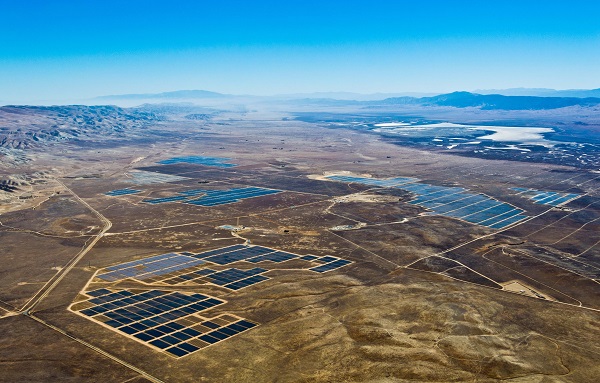It’s official. The loan-guarantee-backed 250-megawatt California Valley Solar Ranch in San Luis Obispo County, Calif., is fully commissioned and operating at a whopping capacity of 250 megawatts, making it one of the biggest PV plants in the world, according to owner NRG Energy. It takes approximately 3.5 million solar panels to produce 250 MW of power.
By the way, yes, it is a power plant, not a “ranch.” It is a large industrial enterprise built by engineering and construction giant Bechtel on the Carrizo Plain, a unique grassland about 50 miles long and 10-15 miles wide separated from the Central Valley by a line of peaks called the Temblor Range, a bit of central California (it is midway between Silicon Valley and LA) rarely visited, home to the endangered San Joaquin kit fox and giant kangaroo rats.

And yet environmental groups such as the Sierra Club, Defenders of Wildlife and Center for Biological Diversity seem to feel pretty good about this clean-energy development, all things considered, having worked to gain concessions on the project (and another big project on the plain, called Topaz). To win government approval, the developers had first “agreed to significant commitments to protect and preserve species,” the groups said, and then with the private settlement came “additional environmental benefits”:
- More than 9,000 acres will be added to the 17,000 acres of land required to be permanently protected and preserved under the permits, resulting in a total of approximately 26,000 acres, or about 40 square miles, of the Carrizo Plain receiving protection as a result of these projects.
- Thirty miles of fencing will be removed from the area, allowing for greater wildlife movement around the projects. Additional beneficial enhancements will be made to the wildlife-friendly fencing around the solar system arrays.
- No rodenticides will be used in the construction or operation of the projects, and the solar companies will help fund efforts to eliminate rodenticides on the Carrizo Plain and in other San Joaquin kit fox conservation areas.
- Topaz and SunPower will make additional significant financial contributions to help San Luis Obispo County acquire lots in the largely undeveloped subdivision in the Carrizo Plain to restore for wildlife conservation.
California Valley Solar Ranch actually consists of a number of fairly distinct arrays of SunPower panels – 10, to be exact. So while the entire site is 4,700 acres, less than a third, 1,500, are covered in panels or buildings. NRG counts the remaining 3,200 acres as “permanently conserved and managed to meet conservation objective for a range of species.”
NRG hit the environmental point hard in its press release announcing the project had powered all the way up (it began producing its first electricity more than a year ago).
“Beyond offsetting carbon emissions and offering clean energy from one of the world’s largest solar facilities, this project’s design takes a leap forward by integrating the surrounding environment in a sustainable manner,” Randy Hickok, senior vice president of NRG Solar, said in a statement. “In addition to its nine solar photovoltaic arrays, CVSR includes a water recycling plant that minimizes annual water use and a plan for protecting and conserving more than 12,000 acres of land in and around the facility.”
Big as California Valley Solar Ranch is, it will soon be dwarfed by other California plants: the 550-megawatt Topaz and the 579-megawatt Antelope Valley Solar Projects, about an hour north of Los Angeles, are both under construction.